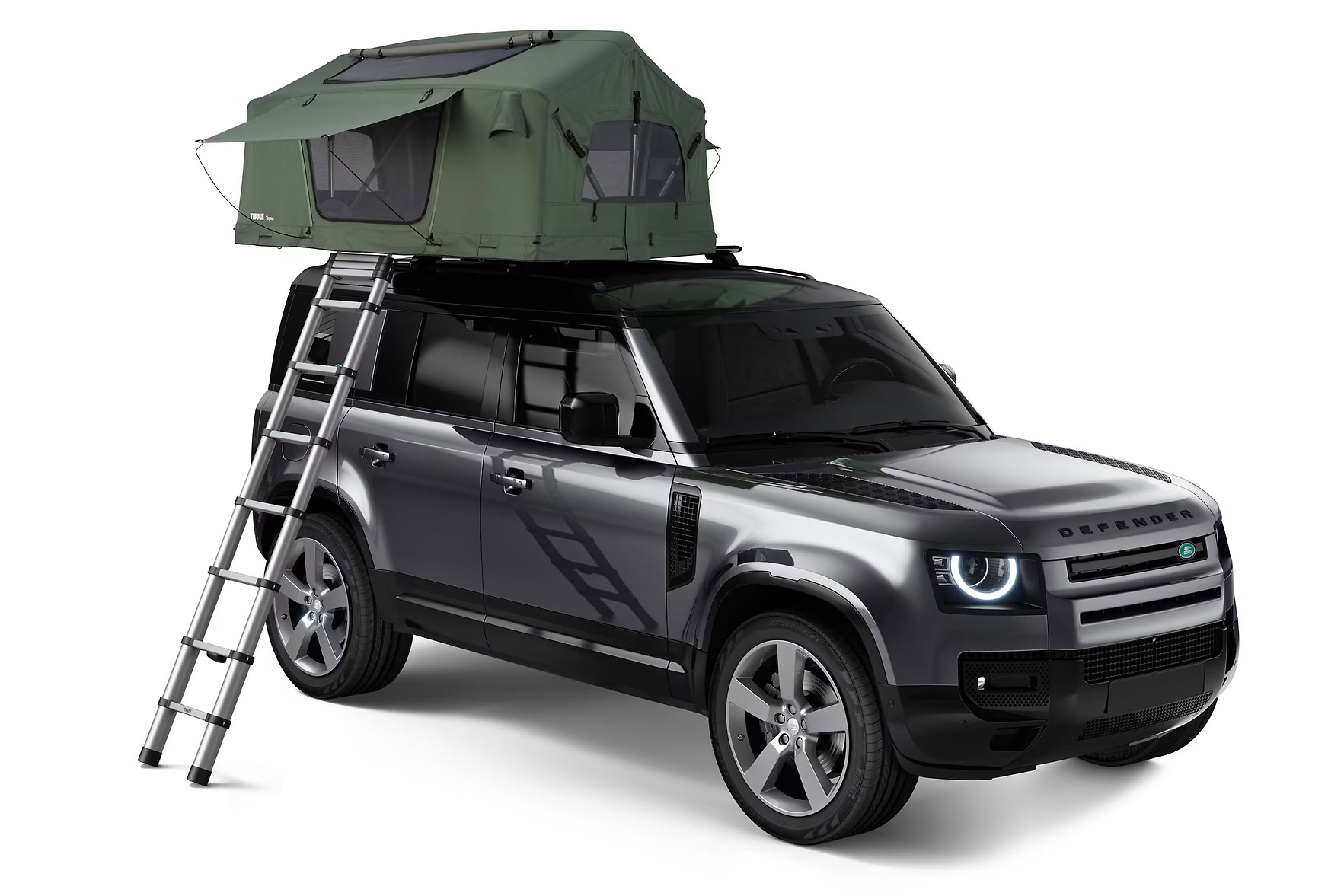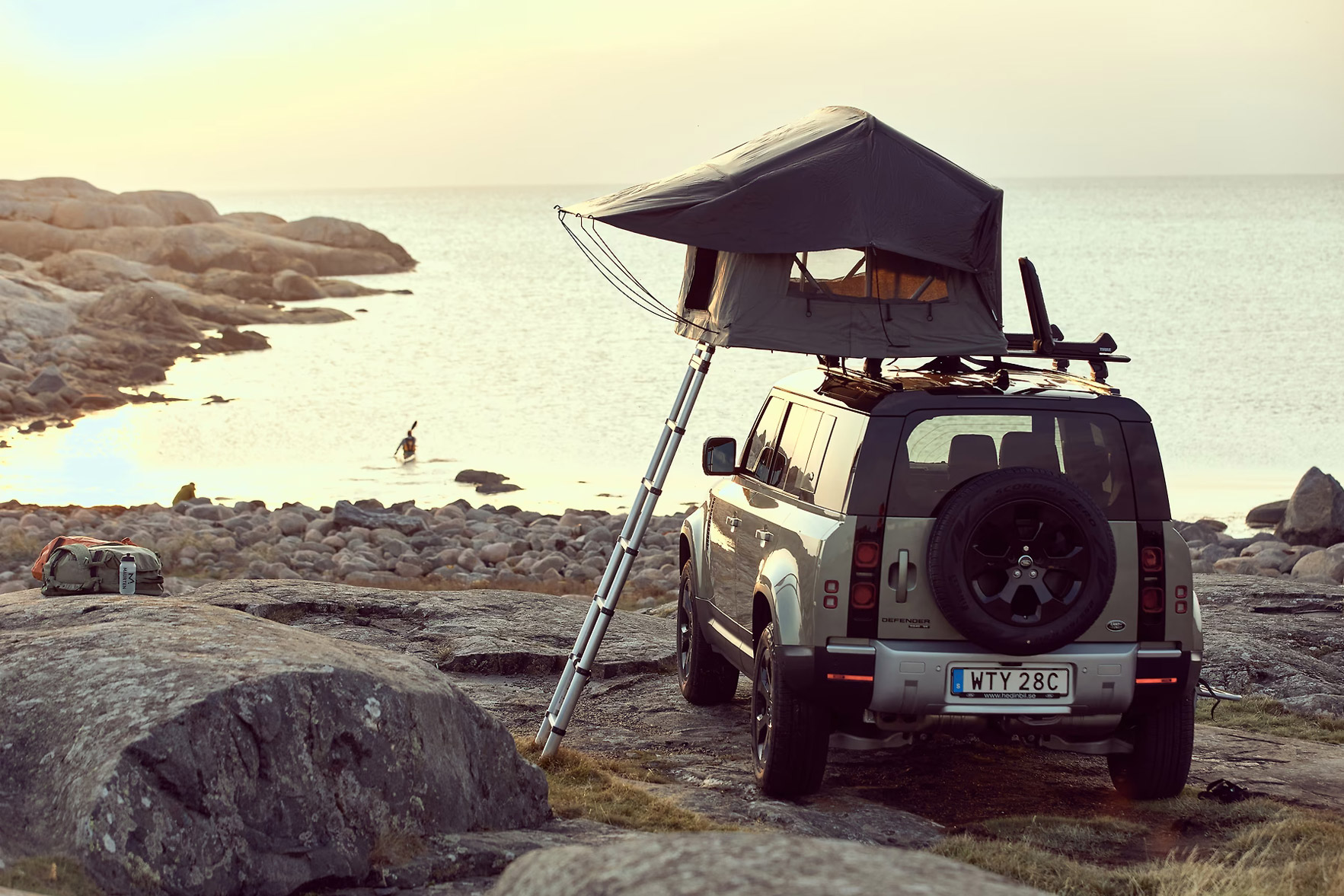Thule’s Tepui Foothill is the next generation of usability in rooftop tents.
In late 2020, Thule announced its Tepui Foothill rooftop tent, or RTT. It’s a slimmer-profile two-person tent that distinguishes itself by leaving space on a vehicle’s roof rack for other gear instead of taking up the whole roof.
I had the chance to test it out, and it’s a great option for those who might have forgone rooftop tents because of other storage needs.
In short: I loved that the Thule Tepui Foothill ($2,000) freed up space on our roof rack for carrying kayaks, bikes, and a roof box.
The tent took longer to set up and pack away than other rooftop tents we’ve tried. However, when deployed, it was comfortable inside even for 6-foot-tall sleepers, with storage pockets that kept inhabitants organized.
And awning-protected roof vents and windows kept us out of the weather and remained warm or cool depending on the season.
Thule’s Tepui Foothill Rooftop Tent
What It Is
Rooftop tents are an excellent alternative to tent camping if you don’t need that real estate for anything else.
Most rooftop tents take up the whole roof, but Thule’s Tepui Foothill is different. The tent is longer and narrower than most other RTTs. This leaves space on the roof for boats, bikes, a roof box, and more.

Setting Up the Thule Tepui Foothill
To set up the Foothill, I unzipped the zippers around the perimeter of the tent. Thule doesn’t use one continuous zipper but several zippers to make zipping and unzipping easier.
Unzipped, with the internal frame clicked into place and awnings staked out, the Foothill is spacious inside with plenty of pockets. And its mattress is as comfortable as the thicker Tepui mattresses I’ve tried.
Setting up the tent is a bit of a project. Once the cover is unzipped, the tent folds open and is supported by the roof and its ladder, which stores inside the vehicle until you set the tent up. The tent is built on Tepui’s newly designed base that reduces tent weight and has improved strength and stability.

Unlike some RTTs, this tent doesn’t automatically pop up. The telescoping internal frame must be clicked into place by crawling inside the tent and pressing pre-assembled poles into place to support the roof.
Once that’s done, flexible metal stakes hook into awning grommets on every side before sliding into receptors on the tent frame.
Advanced Weather Protection That You Control
Massive roof vents and windows on all sides keep wind, weather, and sun out. Or they can let the breeze in, as you prefer.
The tent has oversized entrances on both sides — it’s symmetrical, with an oversized panoramic rear window and dual skylights for airflow and stargazing. Each window has both a screen and a polyester ripstop flap. The roof vents can also be open or closed.
And even with one side of the tent battened down to allow space for a bike, kayak, or roof box, there was still steady airflow.
The Inside

The Foothill tent has loads of space inside. The peak of the roof is 38 inches. One 6-plus-foot tester said it was one of the roomiest RTTs he had slept in.
With an 84 x 47-inch sleeping space, that makes sense. For reference, a queen-size bed measures 80 x 60 inches. It didn’t feel crowded with two people inside, but there wasn’t a lot of extra space on the sides.
The sides of the tent come equipped with organizer pockets that held a headlamp, a book, and other small things off the floor.
Trade-Offs
Having anything on your roof will impact your gas mileage, or if you drive an electric or hybrid — your range. It impacted mine about 15% per charge with local driving, and the impact was greater at higher speeds and with highway driving.
The Foothill’s cover comes completely off when you unzip it to open the tent, and it took me a few tries to get it back on when the tent was new. Leaving bedding inside compounded the problem. But the cover stretches a little bit over time, which made the process progressively easier.
This rooftop tent isn’t a pop-up. To set it up, you need to unzip it, attach the ladder, flip it open, then crawl inside to press the frame into place to give the tent structure. Then you set up the awnings and load the tent with personal gear. This is less than ideal, but as I said, it’s a trade-off.
Breaking the tent down required the reverse process. The more I did it, the quicker I got. But this wasn’t a great tent for inclement-weather camping. When I tried to break the tent down in a rainstorm, both the tent and I got wetter than was ideal. Because the ladder doesn’t stay attached to the tent for transport, I also had a wet ladder in my car.
How much space you have on the roof once the tent is installed depends on the length of your roof bars. The tent’s closed dimensions are 83 x 24 x 9.5 inches. Most vehicles have space for at least a single bike, roof box, or boat racks. And keep in mind that the 122-pound tent can hold 400 pounds of static weight.
Final Thoughts on the Thule Tepui Foothill
The Foothill solves a certain set of problems that RTT campers face. And if you’re a camper who loves sleeping on the roof, but who also needs to carry other gear up there, this tent is a great choice.










